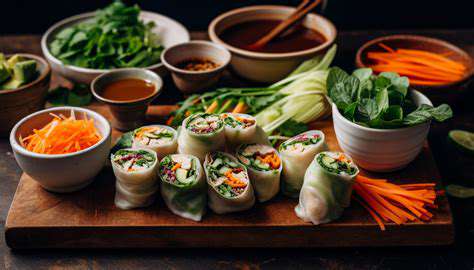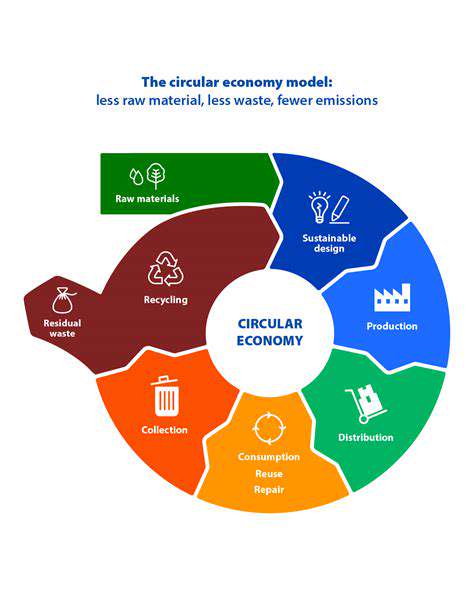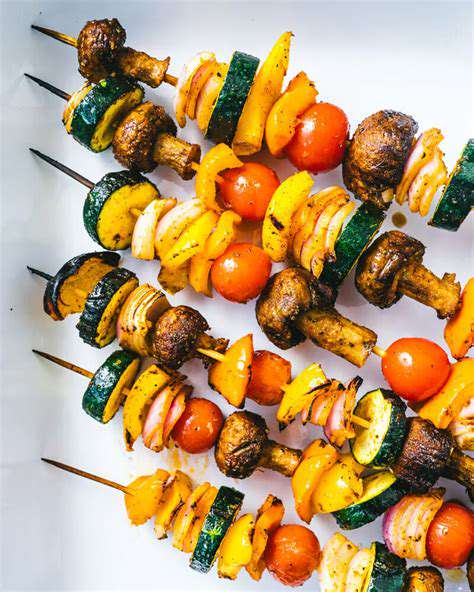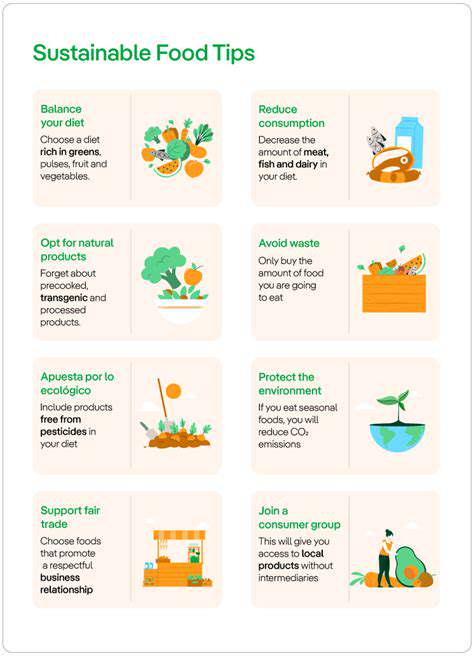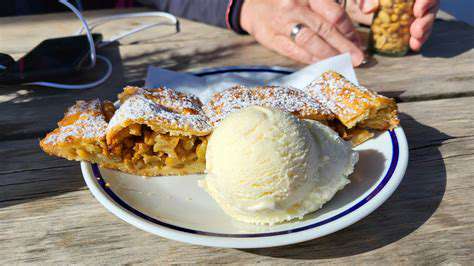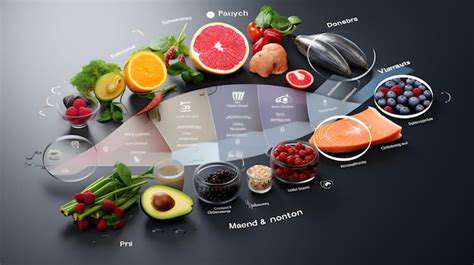From Continental Classics to Asian Inspirations
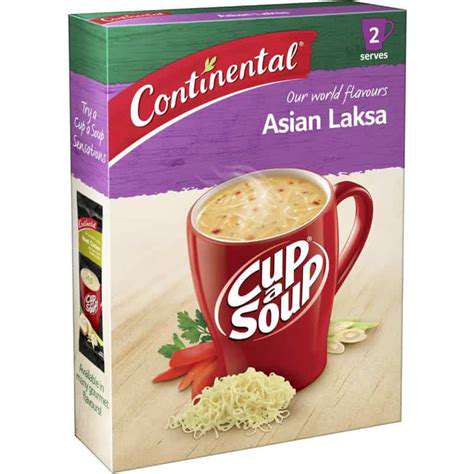
A Journey Through Culinary Worlds
Food bridges continents better than any airline. Exploring global cuisines means discovering how French techniques elevate Vietnamese banh mi, or how Dutch stroopwafels found new life in Japanese convenience stores. This isn't appropriation - it's the beautiful, messy process of cultures conversing through flavors. When Italian espresso meets Malaysian kopi, or German rye bread gets a Korean kimchi topping, everyone wins.
Continental Classics: A Rich Heritage
Europe's breakfast traditions reflect its varied landscapes - from the smoked fish platters of Scandinavia that combat long winters to the sun-drenched tomato-rubbed toasts of Spain. The Austrian kaiserschmarrn (shredded pancake) demonstrates how peasant food became regal, while Swiss bircher muesli shows the health-conscious side of Alpine cuisine. Each dish carries the imprint of history - the Hungarian pogácsa (savory scone) bears Ottoman influences, while Polish zapiekanka (open-faced sandwich) reflects postwar ingenuity.
Asian Flavors: A Tapestry of Taste
Asia's breakfast diversity could fill libraries. Filipino tapsilog (beef, garlic rice, egg) energizes like no other, while Burmese mohinga (fish noodle soup) comforts like a grandmother's hug. Chinese jianbing (savory crepes) showcase street food artistry, and Sri Lankan hoppers (bowl-shaped pancakes) prove that simple ingredients can achieve extraordinary results. The common thread? Respect for ingredients in their prime - whether it's just-caught seafood or rice harvested that morning.
The Fusion Phenomenon
Some of today's most exciting food happens at cultural intersections. Consider the croissant-doughnut hybrid that took New York by storm, or the Japanese-French pastries dominating Tokyo patisseries. When Thai mango sticky rice meets Italian panna cotta, or Peruvian ceviche borrows Japanese knife skills, the results often surpass their parent cuisines. These fusions succeed when chefs understand the essence of each tradition rather than just combining random elements.
Ingredient Spotlight: A Deeper Dive
Great fusion starts with ingredient knowledge. Indonesian kecap manis (sweet soy sauce) can transform a basic omelet, just as Spanish pimentón (smoked paprika) elevates simple scrambled eggs. Middle Eastern za'atar makes avocado toast sing differently, while Japanese yuzu kosho (citrus-chili paste) wakes up creamy cheeses. The secret lies in treating each ingredient as a character in a play - understanding its role and potential chemistry with others.
Culinary Techniques: A Comparative Analysis
Technique differences fascinate: French chefs might spend hours on consommé clarification, while Chinese masters focus on wok hei (breath of the wok) for perfect fried rice. Indian tandoors and Mexican comals achieve similar char with different approaches. When these methods cross-pollinate - like using French sous-vide for Chinese tea eggs - revolutionary flavors emerge. The future belongs to chefs who can fluidly move between these schools of thought.
Beyond the Plate: Culture and Tradition
In Italy, breakfast means standing at a bar with espresso and cornetto, a social ritual as much as a meal. Compare this to the elaborate Korean banchan (side dishes) that accompany breakfast rice, or the Brazilian habit of dunking cheese bread in coffee. These practices reveal cultural attitudes toward mornings - fuel for the day versus family bonding time, simplicity versus abundance. Understanding these contexts makes every bite more meaningful.
The Art of Ingredient Harmony
The Foundation of Flavor: Understanding Base Notes
Successful fusion begins with flavor architecture. Building a harmonious breakfast means knowing how Korean doenjang (fermented bean paste) can anchor a dish like miso does in Japan, or how Mexican chocolate's cinnamon notes might replace traditional spice blends. The foundation determines whether flavors will clash or complement - like choosing the right bass line for a musical composition.
Exploring Complementary Contrasts: A Symphony of Textures
Texture creates dimension. Imagine silky Chinese egg custard topped with Malaysian crispy shallots, or flaky Moroccan msemen (pancakes) wrapped around creamy labneh. The Persian tradition of pairing crisp tahdig (rice crust) with stewed herbs demonstrates how crunch can balance softness. Great breakfasts engage all the senses - the sizzle of butter on a griddle, the aroma of fresh coffee, the visual appeal of colorful ingredients.
The Role of Spices and Seasonings: Unveiling Cultural Nuances
Spices are time machines - a pinch of Tunisian harissa can transport you to Mediterranean markets, while Vietnamese cinnamon whispers of tropical forests. When used thoughtfully, they create bridges between cuisines - like using Japanese shichimi togarashi instead of cayenne in American-style breakfast potatoes, or substituting Ethiopian berbere for paprika in shakshuka. The key is restraint - letting each spice shine without overwhelming.
The Importance of Presentation: Visual Appeal and Culinary Storytelling
Japanese breakfasts demonstrate how presentation elevates experience - delicate dishes arranged like landscapes in lacquerware. Contrast this with the rustic charm of an English fry-up heaped on a plate. Good fusion respects both aesthetics - perhaps arranging Vietnamese pho elements like French consomme garnishes, or presenting Mexican chilaquiles with the precision of sushi. The eye feasts first.
The Art of Balance: Sweet, Savory, and Spicy Harmonies
Thai cuisine masters the sweet-savory-spicy balance that makes fusion exciting. Imagine applying this to breakfast: coconut milk pancakes with chili-infused maple syrup, or savory oatmeal with miso and caramelized bananas. The magic happens in the proportions - enough heat to intrigue but not overwhelm, sweetness that enhances rather than cloys. It's a dance where no partner should step on another's toes.
Beyond the Plate: Pairing with Beverages and Accompaniments
Complete the experience with thoughtful pairings. Ethiopian spiced coffee cuts through the richness of injera breakfasts, just as Taiwanese milk tea complements scallion pancakes. Consider how Italian affogato (espresso over gelato) principles might inspire a breakfast dessert, or how Mexican hot chocolate's cinnamon could enhance French toast. The beverage can be the conductor that ties everything together.
